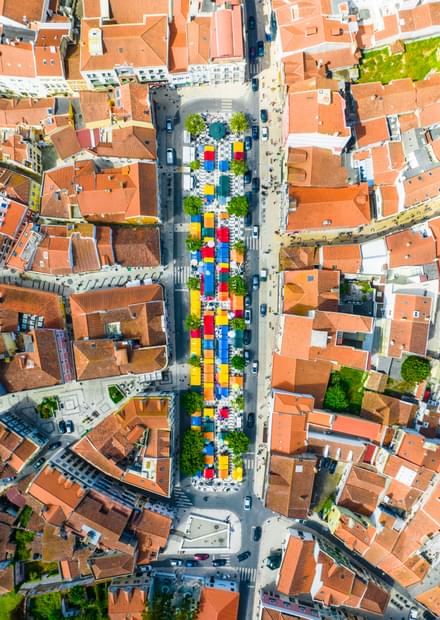There are 4 Lines of Torres: the 1st line between Alhandra and Torres Vedras (46 km) - connecting the Tagus river bank, in Alhandra, to the estuary of Sizandro River, in Torres Vedras; the 2nd line between Forte da Casa and Ribamar (40 km) - starting in Póvoa de Santa Iria and ending in Ribamar across Bucelas and Mafra; the 3rd line around the Fort of São Julião da Barra (3 km) and the 4th Line (7 km) south of the Tagus, in the region of Almada.
In 2019, the 1st and the 2nd Lines were classified National Monument.
The Lines of Torres cross the municipalities of Arruda dos Vinhos, Loures, Mafra, Sobral de Monte Agraço, Torres Vedras and Vila Franca de Xira.
Torres Vedras - along the 1st Line
The Lines of Torres, a landmark of military architecture, were named after Torres Vedras. Beautifully placed at the heart of a truly diversified natural landscape, dominated by fascinating hills, green valleys, windmills, vineyards and gold sandy beaches, only half an hour away from Lisbon.
This route starts in the imposing Fort of São Vicente, one of the most strategic forts of the Line of Torres that controlled the road Coimbra - Lisbon. Also here visit the Interpretation Center of Linhas de Torres and in the surroundings the ancient medieval Castle of Torres Vedras that along with the Fort of São Vicente and Forca, defended one of the main entries to the capital.
Fort do Grilo defended the valley of Sizandro River and the road connecting to Mafra. It is one of the few star-shaped fortifications of the defensive system of the Lines of Torres.
Read more.
Wellington
This route embaces the heart of the Lines of Torres across the most meaningful places of the presence of the iconic Duke of Wellington, whose Memorandum set the foundations of a truly impressive military defensive system.
From Quinta dos Freixos, where the commander of the British and Portuguese allied troops set his headquarters, to the Great Fort of Alqueidão that worked as command post to Socorro Mountain, also known as "the eagle's nest", where the central station of telegraph communications, there are countless fascinating spots to discover.
Read more.
The Defense of the Tagus
This route embraces the starting points of the 1s and 2nd Lines of Torres, beginning in the riverside quarter of Vila Franca de Xira.
At the top of São Lourenço Mountain, an imposing statue of Hercules, the Greek hero, rises majestically as a symbol of the Monument to the Defenders of Linhas de Torres. This iconic statue has the signature of General Joaquim da Costa Cascais. This spot offers a breath-taking view over the Tagus River and the beautiful lezírias.
Read more.
Great Gorges
This route starts in the center of Arruda dos Vinhos, a town that the 1st Portuguese King, D. Afonso Henriques, donated to the Order of St. James.
Discover the Fort do Cego and its clever rainwater drainage pipe and the Fort da Carvalha, located at the highest spot of the region west from the town of Arruda dos Vinhos, at a height of 394 meters. This fort housed 400 soldiers, protecting the Arruda Valley, along with Fort do Cego, allowing a cross-fire over the enemy troops.
Read more.
The junction of the Lines
The strategy underlining the Lines of Torres was based on the control of the road connections to Lisbon. The road network and the accentuated relief of the region have enabled one of the biggest concentration of fortifications.
This route begins in the Fort da Feira, a fortification integrated in the village of Malveira. Nearby visitors will find other outstanding military works, such as: the strongholds of Montachique and Mosqueiro. In the village of Montachique there was a supply station for Anglo-Portuguese troops and at the highest peak a telecommunication post connected to Socorro Mountain.
Read more.
From the Palace to the Atlantic
The National Palace of Mafra was the stage of several decisive episodes of the Peninsular War. It was here that the King D. João decided to flee to Brazil, as the French troops were approaching Portugal in the First French Invasion, in 1807. The Library of the National Palace of Mafra is one of the most stunning libraries in the world, presenting a deeply valuable heritage of 30.000 books, carefully preserved by a colony of bats!
Discover the Fort of Zambujal, an absolutely unique masterpiece of military architecture! It is one of the most elaborate structures of the 2nd Line with a rock-cut tunnel running through it and an advanced battery.
Read more.



























